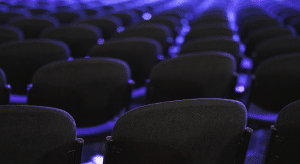What Is the Difference Between a BA and BFA?
by Taylor Slattery | April 18, 2023

Aside from the names themselves, the main difference between these two programs comes down to the coursework. BFA programs will lean more heavily toward their area of focus in terms of credit hours. Whereas the courses that would be categorized as general education can account for anywhere up to half of the total credit hours in a BA program, in a BFA, they will often only account for a quarter.
This gives students in a BFA program significantly more hands-on instructional time under the guidance of knowledgeable professors in comparison with those in a BA program. Having more access to teachers in a studio environment is beneficial not only in terms of honing one’s skills and guiding creative development, but also in the opportunity it provides to network, both with professors with experience and connections in the industry and fellow students who will soon be a part of it.

On the flip side of the coin, students in a BA program will have more freedom to pursue courses that fall under that general umbrella and will also have an easier route to pursuing a minor should they choose to. BA programs aren’t completely without hands-on studio classes, either, just not nearly as much when compared to a BFA program. While both BA and BFA programs provide students with the skills and knowledge to enter the workforce, it’s the hands-on, practical component that marks the biggest difference between the two.
For students looking to dive as deeply as possible into their chosen field of study, a BFA program is the best course of action. Its rigorous curriculum leaves no stone unturned, exploring the various aspects of the discipline in greater detail than is possible in a BA program. Beyond just mere exposure to these facets, students are pushed to master them, leveraging the knowledge gained by completing a variety of projects to build a portfolio capable of impressing even the most discerning of eyes. By the time graduation rolls around, students are armed with a knowledge base and body of work enabling them to step into any work environment with confidence.
The difference in credit hours of discipline-specific studio time can have an impact after graduating when looking for jobs in several ways. The first of which relates directly to the quality of work found in the student’s portfolio. With more time dedicated to crafting each piece and having received more attention and feedback from professors, the likelihood of leaving school with a highly-polished portfolio and finding more work opportunities as a result, might be higher for graduates of a BFA program when compared to those with a BA. Additionally, having a BFA on your resume communicates a higher degree of expertise to potential employers and can help to give you a leg up on the competition.

Taylor is the Managing Editor of Notes on Design. Taylor is a graphic designer, illustrator, and Design Lead at Weirdsleep.
Sessions College offers accredited fully online degree and certificate programs in Graphic Design, Web Design, Digital Media, Illustration, and Photography. Federal financial aid is available for eligible students. Contact Admissions for more information.
Recent Articles






























